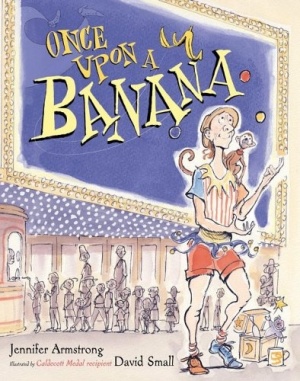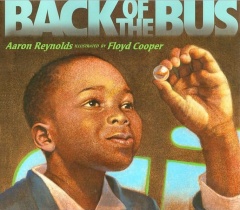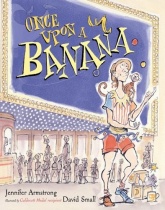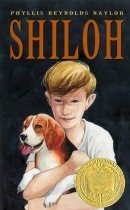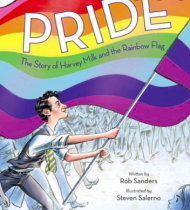Evaluation
I love how this book successfully demonstrates the “domino effect.” Although there are multiple villagers on every page moving, falling, dancing, bouncing or throwing their hands up angrily, the banana brings the reader back to one single event that started it all. The banana adds a sense of mystery to the events that occur within this book. Sometimes the banana is enlarged, but sometimes it is hidden on the corner of the sidewalk. The illustrations smoothly connect each event so that if you were to flip through the pages quickly it would look like you were watching a short film. The motion that is created through the dark smoke of the trucks passing by to the whizzing shopping cart, to the falling ladder, to the flying baby cart is intriguing. It is almost as if the reader and the illustrator designed this story with the intent of teaching the students cause and effect.
I think this story can be used in grade levels as early as kindergarten up to first or even second grade. For the younger children it gives them confidence in their ability to look at the pictures and invent their own story and to the older children it reassures them that they do have a voice when reading literature. You may use this story to teach a lesson on literary predictions. What will happen when the ladder falls? Does the illustrator give us some clues as to what is going to happen next? You may use this book as a journal activity. A teacher may also choose to show one or two pages a day and then have the students write about what they think is happening within the story. The students could complete “think, pair, share” activity where they discuss their journal entries, what they noticed and what they missed. The students can also discuss the author’s choice of color, design and placement of objects. How does this affect the reader? What makes this story so intriguing?
